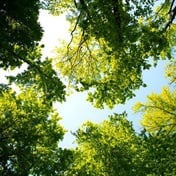Amid the highest recorded pollen counts in history, Health24 will be bringing you exclusive pollen count updates courtesy of the UCT Lung Institute's Allergy and Immunology Unit.
Here are the major city updates for 9 January:
Cape Town (Western Cape)
Pollen and mould levels were low during this sampling period of warm, dry, weather with only slight rain in some areas of Cape Town. Grass levels were low as were trees (Eucalyptus, pine, Rhus and Casuarina) and weeds (English Plantain, Protea and Apiaceae, the celery carrot and parsley family). Mould levels were extremely low.
Count: 5 (low) [Last week: 2 (very low)]
Johannesburg & Pretoria (Gauteng)
Significant levels were seen for grass pollen during this sampling week. Tree pollen increased slightly and included Acacia, Casuarina, Cypress, mulberry, olive, yellowwood, plane, jacaranda and weeping willow. Weed pollen was low and included: English Plantain, goosefoot, daisy and Stoebe, a shrub of the daisy family. Mould levels were low.
Count: 18 (moderate) [Last week: 5 (low)]
Bloemfontein (Orange Free State)
Grass counts increased at this site and although the mean count remained below the threshold, significant counts were detected on some days. Trees flowered strongly following rain and the following trees were identified: Olive, oak, rhus/Searsia, acacia, buddleja and white stinkwood. In the weed/herbaceous shrub category, only daisy pollen was observed. Mould remained low.
Count: 10 (moderate) [Last week: 5 (low)]
Kimberley (Northern Cape)
Pollen levels remained very low and low grass, tree (olive and Casuarina) and weeds (ferns) were seen. Mould levels were low. Alternaria increased after slight rain and approached but did not exceed the significant threshold
Count: 1 (very low) [Last week: 0 (very low)]
Durban (KZN)
High mould counts were detected during a sampling week of humidity levels >85%. Very high ascospore levels were seen and basidiospores, Epicoccum and Cladosporium levels increased. Grasses increased and although the average daily count was low, the count exceeded the significant threshold at times. Tree pollen increased and included; birch, rhus, acacia, white stinkwood and olive. Weed pollen levels also increased as daisy, ferns and Parietaria were seen.
Count: 12 (moderate) [Last week: 8 (moderate)]
Port Elizabeth (Eastern Cape)
Grass counts were low at this sampling site. Tree pollen levels were low and included: Casuarina and pine. Weed pollen consisted of daisy only. Mould counts were uniformly low.
Count: 2 (very low) [Last week: 1 (very low)]
See the full report HERE.
Reference ranges:
Overall, Trees, Grasses and Weeds all use the same values (grains per cubic metres of air).
Overall count is the daily average of pollen grains per cubic metres of air (trees plus grasses plus weeds)
In partnership with the the UCT Lung Institute's Allergy and Immunology Unit.
As the pollen problem worsens, precise and expanded monitoring becomes even more essential. And here's how you can help.
Image credit: David Vig, Unsplash




 Publications
Publications
 Partners
Partners















